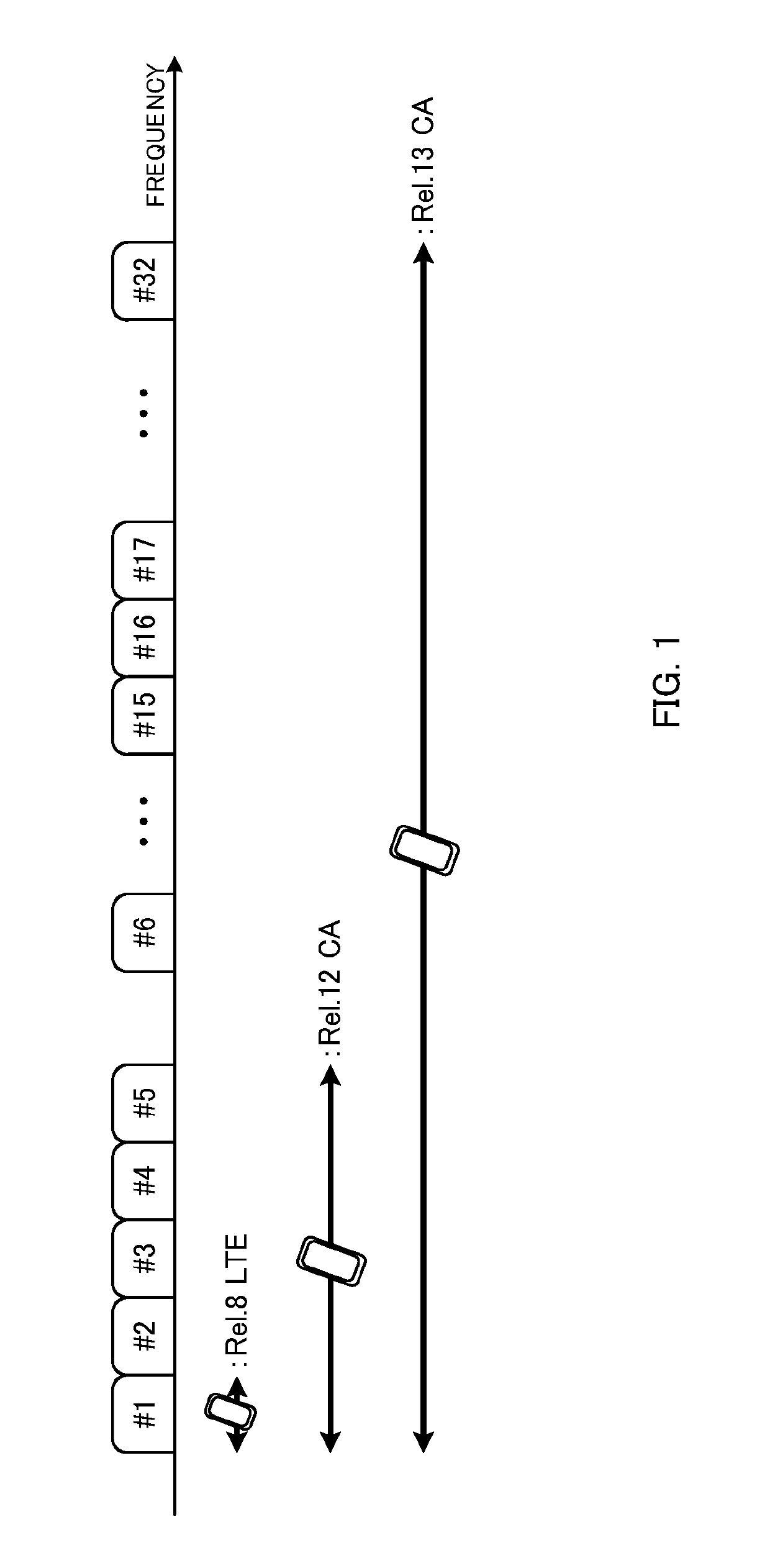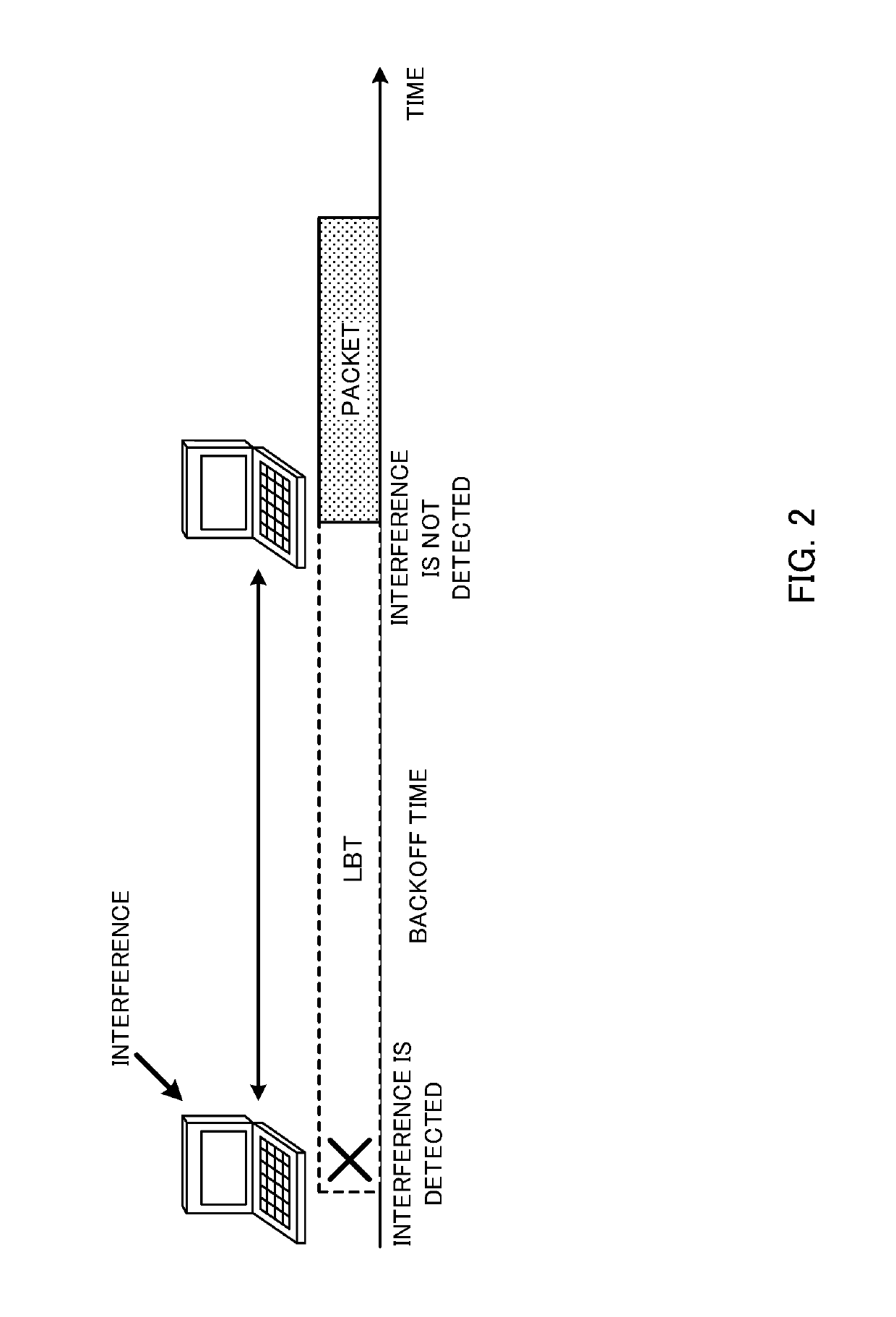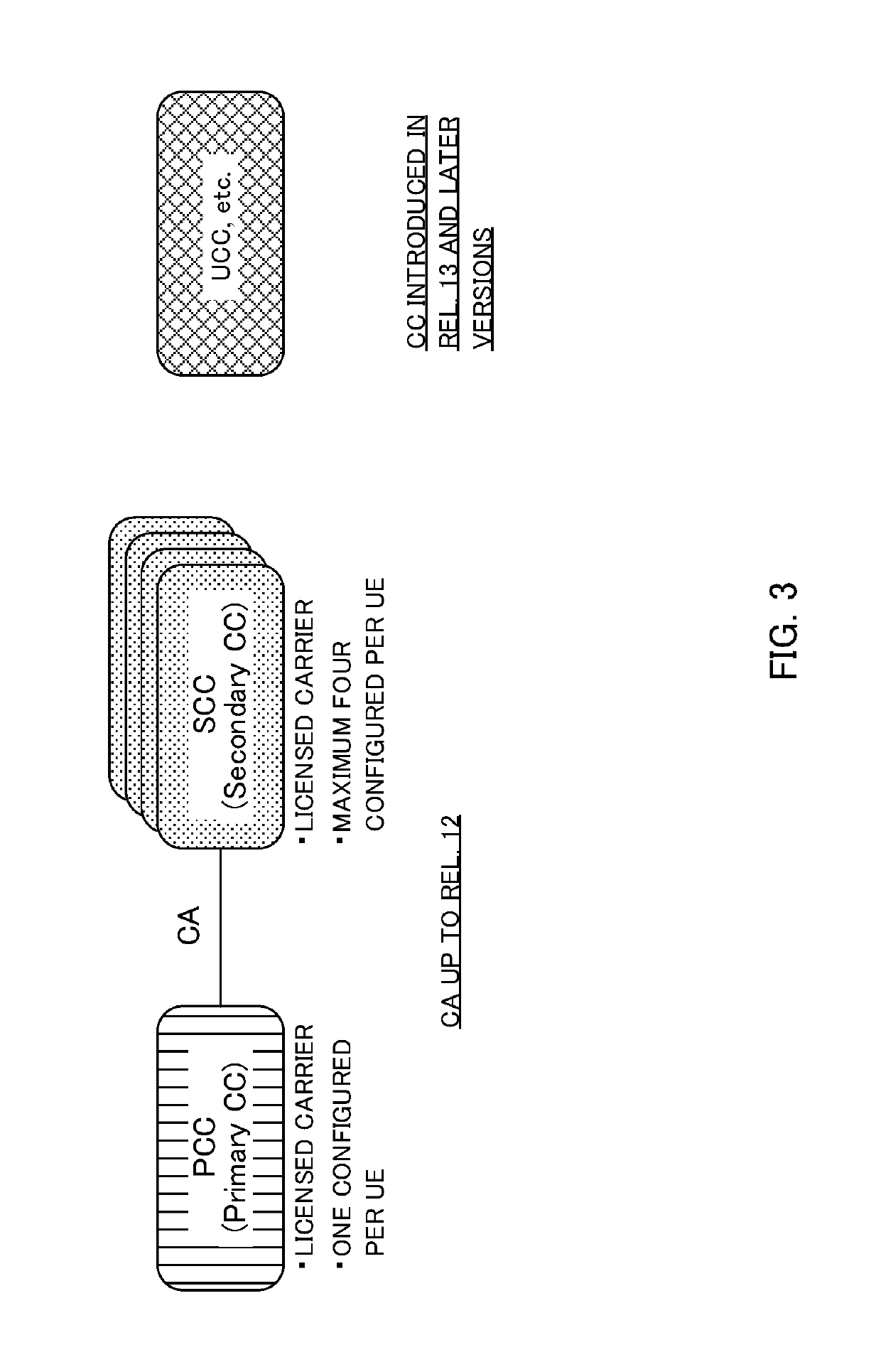User terminal, radio base station, and radio communication method
a radio communication method and user terminal technology, applied in power management, orthogonal multiplex, frequency-division multiplex, etc., can solve the problem of significant cross-interference in comparison to a licensed band, and achieve the effect of adequate communication
- Summary
- Abstract
- Description
- Claims
- Application Information
AI Technical Summary
Benefits of technology
Problems solved by technology
Method used
Image
Examples
first example
[0051]An example case will be described with a first example where a user terminal saves unnecessary UL transmission operations.
[0052]In PCCs and SCCs of existing systems (Rel. 10 to 12), a user terminal transmits UL data when downlink control information (UL grant) to command UL data (PUSCH) allocation is received from a radio base station. Now, an example of PUSCH transmission operations in an existing system will be described below with reference to FIG. 7.
[0053]When uplink data to transmit (UL data) is produced (ST10), a user terminal (UE) sends a scheduling request to a radio base station (eNB) (ST11). If the user terminal does not have dedicated UL resources in ST11, the user terminal starts the random access procedures. In response to the scheduling request from the user terminal, the radio base station transmits a UL grant that commands resource allocation for uplink data transmission (ST12). Based on this UL grant, the user terminal transmits a buffer status report (BSR), w...
second example
[0065]UL HARQ operations by a user terminal in a TCC will be described below with a second example.
[0066]In an existing system (Rel. 10 to 12), a user terminal employs synchronous UL HARQ based on a PHICH (Physical Hybrid-ARQ Indicator Channel) that is reported from a radio base station. An example of synchronous UL HARQ in an existing system is shown in FIG. 9.
[0067]FIG. 9 shows a case where a user terminal transmits UL data (for example, the PUSCH) in subframe #0. In this case, a radio base station judges whether or not UL data (PUSCH) that is transmitted from the user terminal is received adequately, and transmits a PHICH for retransmission control (ACK / NACK) to the user terminal a predetermined timing later. The radio base station can make the timing to transmit the PHICH, for example, four subframes later in FDD (here, subframe #4).
[0068]When the PHICH that is transmitted from the radio base station is an ACK, the user terminal transmits new UL data, and, when the PHICH is a NA...
third example
[0088]A UL allocation method to take LBT results in an unlicensed band (TCC) into consideration will be described with a third example.
[0089]In the event a TCC is an unlicensed band, even when a radio base station (eNB) assigns UL transmission (for example, a PUSCH) to a user terminal, the user terminal is limited from making UL transmission if LBT in the TCC yields a result of (LBT_busy).
[0090]Consequently, according to the present embodiment, the radio base station allocates resources (for example, PUSCH resources, PUCCH resources, and so on) for a plurality of TCCs from one CC, at the same time. That is, when the user terminal is commanded UL transmission in a TCC, the user terminal can make UL transmission by using a TCC that is capable of transmission (LBT_idle) among a plurality of TCCs.
[0091]The radio base station can link between the CCs for the user terminal in advance. For example, as shown in FIG. 11, TCC group #1, which includes a plurality of TCCs #1 and #2 (CCs #2 and ...
PUM
 Login to View More
Login to View More Abstract
Description
Claims
Application Information
 Login to View More
Login to View More - R&D
- Intellectual Property
- Life Sciences
- Materials
- Tech Scout
- Unparalleled Data Quality
- Higher Quality Content
- 60% Fewer Hallucinations
Browse by: Latest US Patents, China's latest patents, Technical Efficacy Thesaurus, Application Domain, Technology Topic, Popular Technical Reports.
© 2025 PatSnap. All rights reserved.Legal|Privacy policy|Modern Slavery Act Transparency Statement|Sitemap|About US| Contact US: help@patsnap.com



